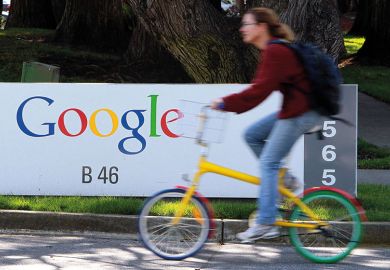Academics need not sell their souls to collaborate with industry, a study suggests, with university-business partnerships producing a surprisingly high proportion of basic rather than applied research.
Journal articles with both university and private-sector authors also achieve average citation rates about one-quarter higher than those penned exclusively by academics, and three-quarters higher than those wholly written by corporate researchers, the research found.
The yet-to-be published findings, which focused on US publications, come from what academics say is by far the biggest study of its type into university-business research alliances – the people involved, the types of research they undertake, the fields they favour and the impact they make.
The analysis was undertaken by Swinburne University of Technology’s Centre for Transformative Innovation. Lead researcher Russell Thomson said that, as universities came under pressure to ramp up their private-sector partnerships, the study provided insights into the kinds of science likely to result.
The team crunched 14 years of data from Clarivate’s Web of Science journal articles database, and identified about 6 million US organisation names affiliated to authors of peer-reviewed publications. It cross-checked each against 2.5 million entities listed in the Orbis database of companies, producing a comprehensive inventory of articles co-written by US academics and corporate researchers between 2000 and 2014.
The analysis found that the proportion of US journal articles with corporate authors had remained fairly steady at about 5 per cent, contradicting a smaller 2015 study that had concluded that publications by company scientists were declining.
Almost half the corporate publications involved university-company collaborations, with 28 per cent of these papers appearing in journals specialising in basic research – lower than the 43 per cent of papers written exclusively by university academics, but higher than the 24 per cent of those with purely corporate authors.
Dr Thomson said he suspected that big companies had always done some basic research. “It flies in the face of the intuition that once you bring corporations on board, you’ll be going for super-applied, shallow pieces of analysis that have a ready commercial return,” he said.
The analysis also found that, three years after publication, the collaboratively written papers had achieved average citation rates up to 59 per cent higher than university-only papers – and up to 79 per cent higher than corporate-only papers – in disciplines as diverse as pharmacology, biochemistry, applied physics and environmental sciences.
The pattern applied in all but one of the broad fields investigated – engineering and electrics – where the average citation rates of university-only papers was highest.
Dr Thomson said it was too early to draw a “causal connection” concluding that research teams could increase their citations simply by bringing company affiliates on board. “It could be that the studies that were collaborative had more resources invested in them, or something like that,” he said.
The team is rerunning the project to encompass small firms, which were excluded from the initial analysis, partly to gauge the collaborative contribution of small university spin-off companies. It also plans similar studies involving different countries.
Register to continue
Why register?
- Registration is free and only takes a moment
- Once registered, you can read 3 articles a month
- Sign up for our newsletter
Subscribe
Or subscribe for unlimited access to:
- Unlimited access to news, views, insights & reviews
- Digital editions
- Digital access to THE’s university and college rankings analysis
Already registered or a current subscriber?











